If you only have 4 days in London, it can be tough to know what to see and do.
There are so many options and it can be overwhelming trying to make the most of your time in such a big city – especially when visiting London for the first time.
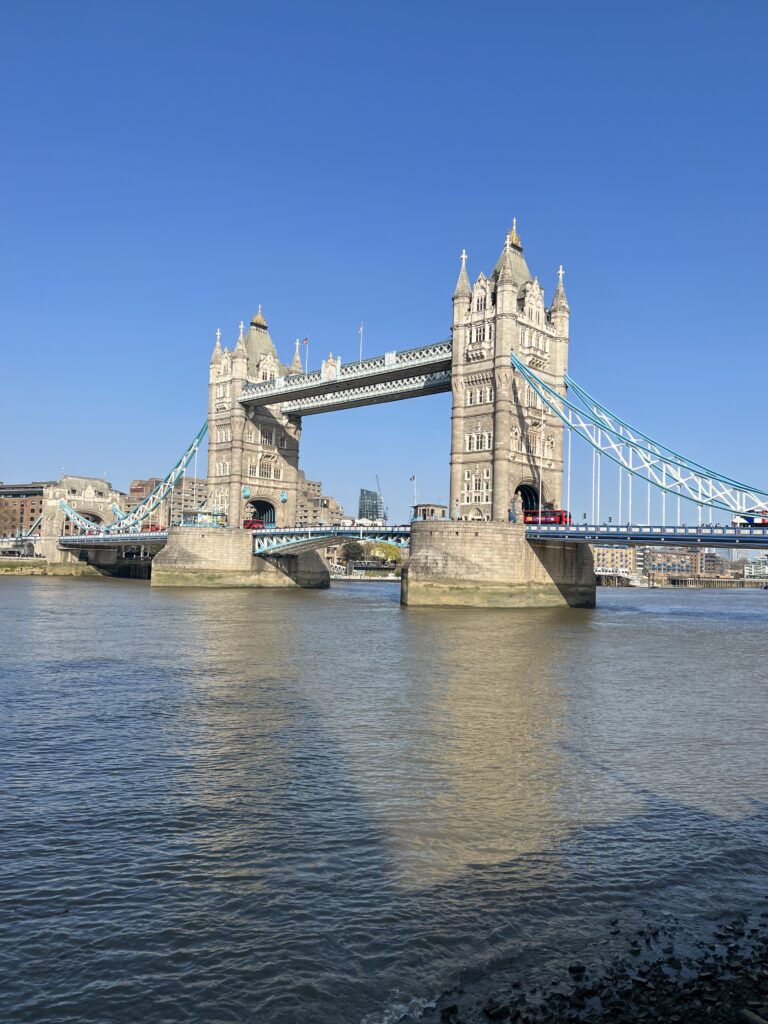
I’ve visited this historic city twice now and both times I was visiting for less than 48 hours each time. I still managed to see the most of what this beautiful city is about.
So if I can do London in two days, you can definitely do London in four!
With its rich history, diverse culture, and beautiful parks and streets, it’s no wonder that this city is one of the most popular tourist destinations in the world. From iconic landmarks to historic buildings, from world-class museums to charming pubs, this itinerary covers all the bases.
No matter what your interests are, you’re sure to find something to love in London.
So whether it’s your first visit or you’re a seasoned traveler, follow this London itinerary to help you make the most of your 4 days in this city.
In this post, you'll find...
About London
London is the capital and largest city of England and the United Kingdom.
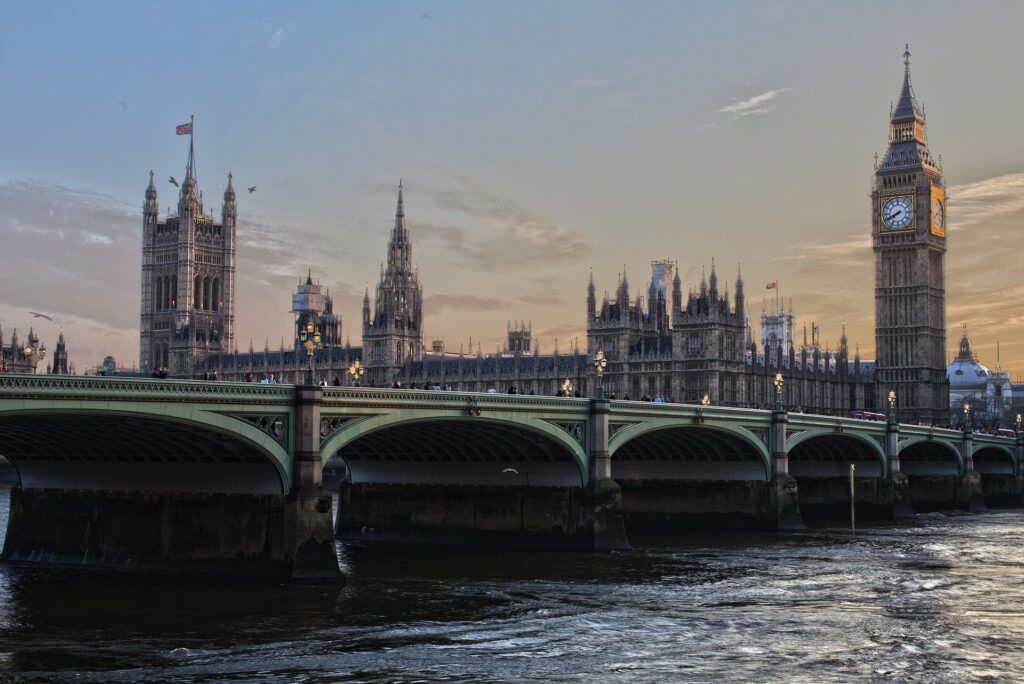
It is standing on the River Thames in the southeast of Great Britain, London has been a major settlement for two millennia (almost 2,000 years!).
London is a major tourist attraction, hosting upwards of 30 million visitors every year from all over the world. It is the world’s most-visited city as measured by international arrivals, and has the world’s largest city airport system measured by passenger traffic.
London is also one of the greenest cities in Europe, with almost 40% of Greater London being greenspace. This makes it a perfect place to enjoy a picnic lunch or just take a leisurely stroll.
Some of the best parks in London include Hyde Park, Regent’s Park, and Richmond Park.
Highlights of London
When it comes to food, London has something for everyone.
From world-famous Michelin-starred restaurants to humble street food stalls, you’ll never go hungry here. As one of the most diverse European cities, London’s cuisine reflects its multicultural population.
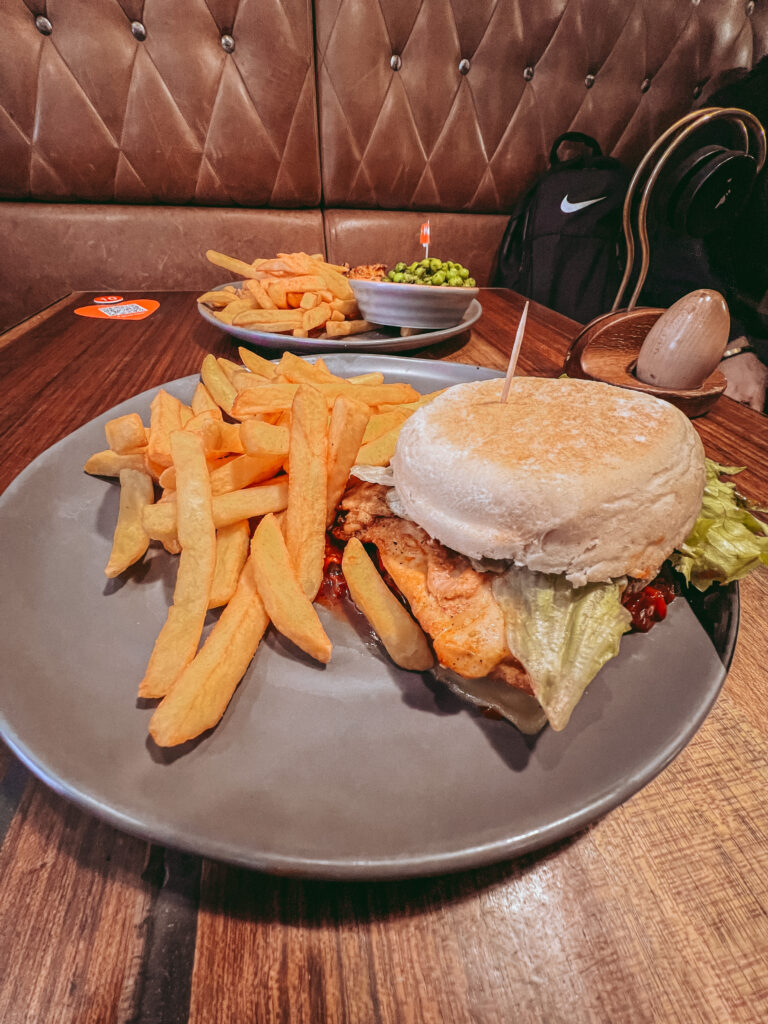
You’ll find everything from Indian curries to Italian pasta dishes, and everything in between.
And of course, no trip to London would be complete without enjoying a traditional English afternoon tea!
British history lovers in London will be spoilt for choice, with hundreds of museums and historical landmarks to explore. Some of the most popular include the British Museum, the Natural History Museum, the Victoria & Albert Museum, and the Tate Modern.
If you’re looking for a more unique experience, then be sure to check out some of London’s quirkiest attractions, such as the Cereal Killer Cafe, the Sherlock Holmes Museum, and the Churchill War Rooms.
If you’re a Harry Potter fan in London, you can also visit the Harry Potter Warner Bros Studios and Platform 9 3/4 at King’s Cross station. Here you can explore the sets, costumes, and props used in the films.
Whether you’re interested in exploring its history and culture, enjoying its food and nightlife, or simply taking in the sights, London truly is a city that has something for everyone.
Getting to London
Since it’s a major city, there are many ways to get to London.
If you’re coming from within the UK, then you can take the train, bus, or drive.
And if you’re coming from outside the UK, then you can fly into one of London’s airports.
You can usually find discount airfare if you book in advance and are flexible with your travel dates.
Depending on where you’re coming from, it might be easier to come by train.
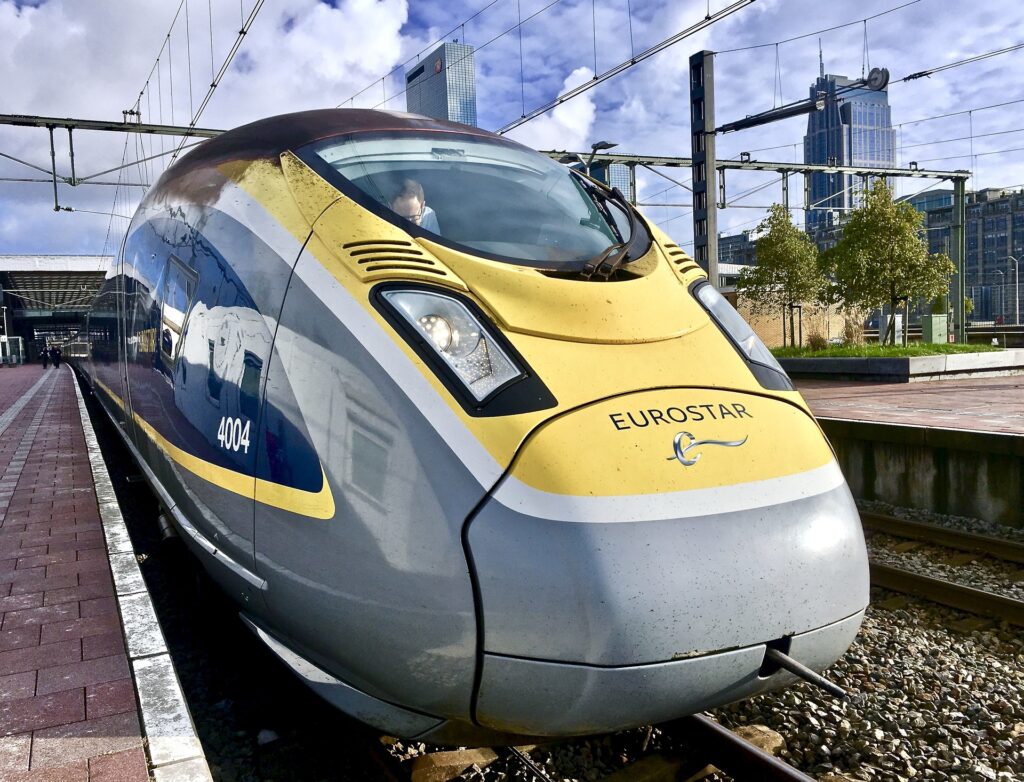
You might want to consider taking the Eurostar train from Paris or Brussels. This is a high-speed train that goes directly from these cities to London’s St Pancras International station. The journey takes about 2.5 hours one-way.
It’s a much more pleasant way to travel than flying in my opinion, because it takes you directly to the city center.
If you’re arriving from outside of Europe, then you’ll most likely be flying into one of London’s airports.
The two main airports are London Heathrow Airport (LHR) and London Gatwick Airport (LGW). Heathrow is the largest airport and is located west of London, while Gatwick is located south of London.
There are also a few smaller airports, such as Luton (LTN) and Stansted (STN), but these are mostly used by budget airlines.
Getting around London
Once you’re in London, there are many ways to get around.
The city has an extensive underground train system (usually referred to as “The Tube”) that is easy to use and covers most of Greater London. It’s also the most common way to get around the city.
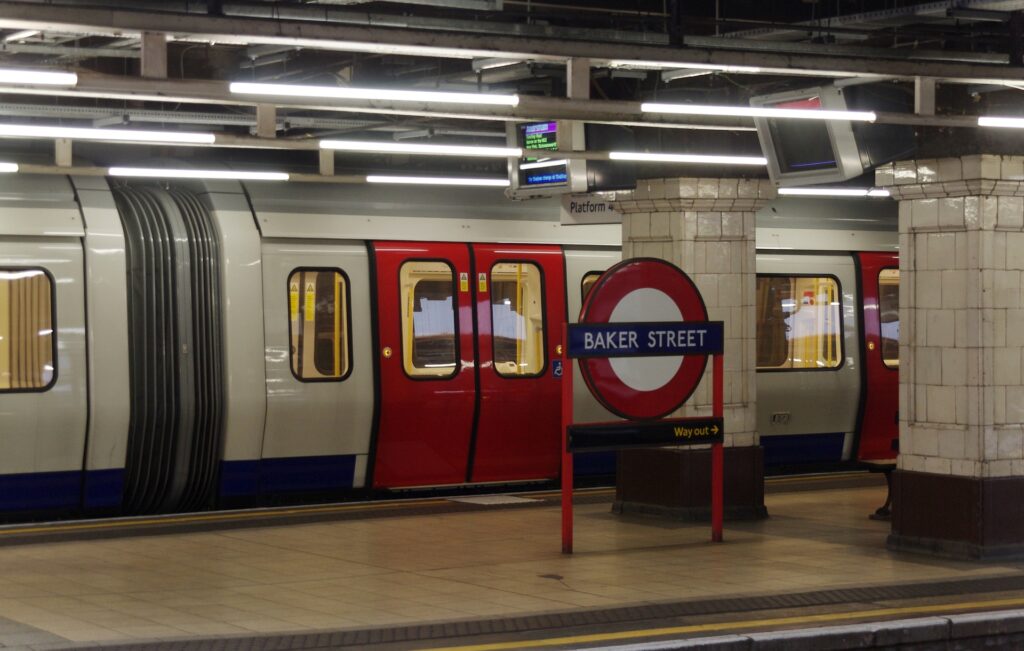
You can also take the bus, but keep in mind that traffic can be heavy, so the bus might not always be the quickest option.
Navigating the tube in London is fairly easy, and there are plenty of maps and signage to help you find your way around. Tickets can be bought at the tube station from machines or from the ticket office.
I’d recommend downloading the app Citymapper, which will help you plan your route and give you live updates on the best way to get around.
If you’re planning on doing a lot of traveling, then you might want to consider purchasing a travel card, which allows you unlimited travel on all public transport in London for a certain period of time.
If you’re staying in Central London, then you may not need to use public transportation at all, as many of the main attractions are within walking distance of each other and you can probably walk to most of the places that you want to go.
For example, you can easily walk from Buckingham Palace to Westminster Abbey in about 20 minutes. London is a very pedestrian-friendly city, with plenty of sidewalks and crosswalks.
And if you’re feeling adventurous, then you can also rent a bike and cycle around London. Just be sure to stay aware of the traffic and follow the rules of the road!
If you want to explore beyond Central London, then you can take a day trip to one of the many surrounding towns and villages.
Some of the most popular destinations include Oxford, Windsor, and Bath. The best way to get here is by train, as the journey is quick and easy.
When to visit London
The best time to visit London depends on what you want to do while you’re here.
If you’re interested in enjoying the outdoors, then spring (March-May) or autumn (September-November) are the best times to come, as the weather is usually mild and pleasant.
Summer (June-August) is also a good time to visit, but keep in mind that it can be quite crowded, as this is the peak tourist season.
If you don’t mind chilly weather and you’re interested in saving money, then winter (December-February) is a good time to come, as hotel prices are typically lower and there are fewer tourists.
Just beware that the weather can be cold and rainy, so you’ll need to dress appropriately.
No matter when you visit, there’s always something to do in London!
Related read: How to visit London in one day on a day trip from Paris
Things to do in London
Like I mentioned, there truly is tons to see in London no matter what time of year you visit.
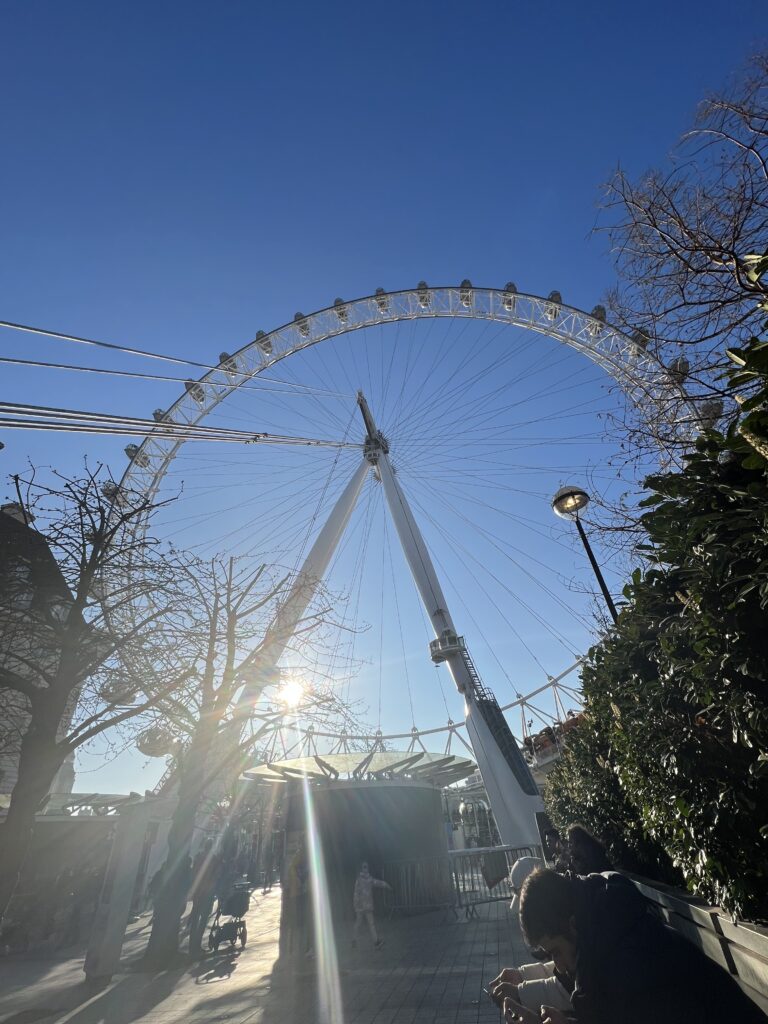
Here are just a few of the many activities and attractions that you can enjoy while visiting London:
- Visit the Royal Palace at Buckingham and see the changing of the guard
- Explore Westminster Abbey, St. Paul’s Cathedral, and other historic churches
- Take a ride on the London Eye Ferris wheel
- Walk across Tower Bridge
- Explore Trafalgar Square
- Visit the Tower of London and see the Crown Jewels
- Explore Kensington Palace and Hyde Park
- Visit Big Ben, the world-famous clock tower
- Check out the Houses of Parliament and Westminster Abbey
- Stroll along the South Bank of the Thames River
- Visit the famous London Bridge
- See a play at Shakespeare’s Globe Theatre
- Visit Camden Market and Brick Lane Market
- Explore Notting Hill and Portobello Road Market
- Check out the street art in Shoreditch
- Visit Covent Garden, Piccadilly Circus, and Leicester Square
- Do some shopping on Oxford Street and Regent Street
- Take a day trip tour of Stonehenge
- …and much more!
As you can see, there’s plenty to keep you busy during your visit to London. You can easily spend weeks in this historic city and still not see everything that London has to offer!
You can browse through hundreds of London attractions, activities and excursions on GetYourGuide 👇
If you’re planning on doing a lot of sightseeing, then I’d recommend buying a London Pass. This pass allows you access to over 80 of London’s top attractions, as well as free entry to many museums.
It also includes a hop-on, hop-off bus tour, which is a great way to see the city. The pass also comes with a guidebook, which has maps and information on all of the attractions.
You can purchase a London Pass by clicking here.
What to do in London – 4-Day London Itinerary
Day 1: Sightseeing in London
For your first day in London, exploring the city on foot and checking out all the major sites is a must. But first thing’s first – coffee!
London is home to tons of great coffee shops, so start your day with a delicious cup of coffee and some breakfast.
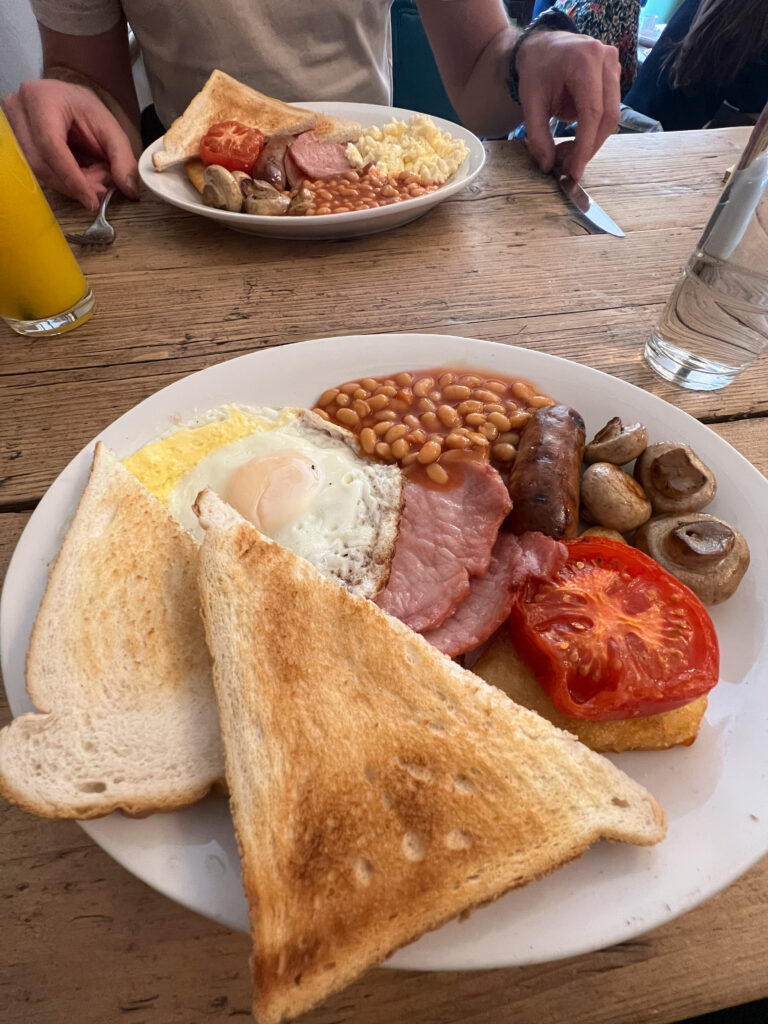
One of my favorites (and arguably one of the most popular in London) is Department of Coffee and Social Affairs. They have several locations throughout the city, so you’re sure to find one near where you’re staying.
Once you’re fueled up and ready to go, start your sightseeing tour by heading to Buckingham Palace to see the changing of the guard. This ceremonial event takes place every day at 11:30 am, so be sure to arrive early to get a good spot.
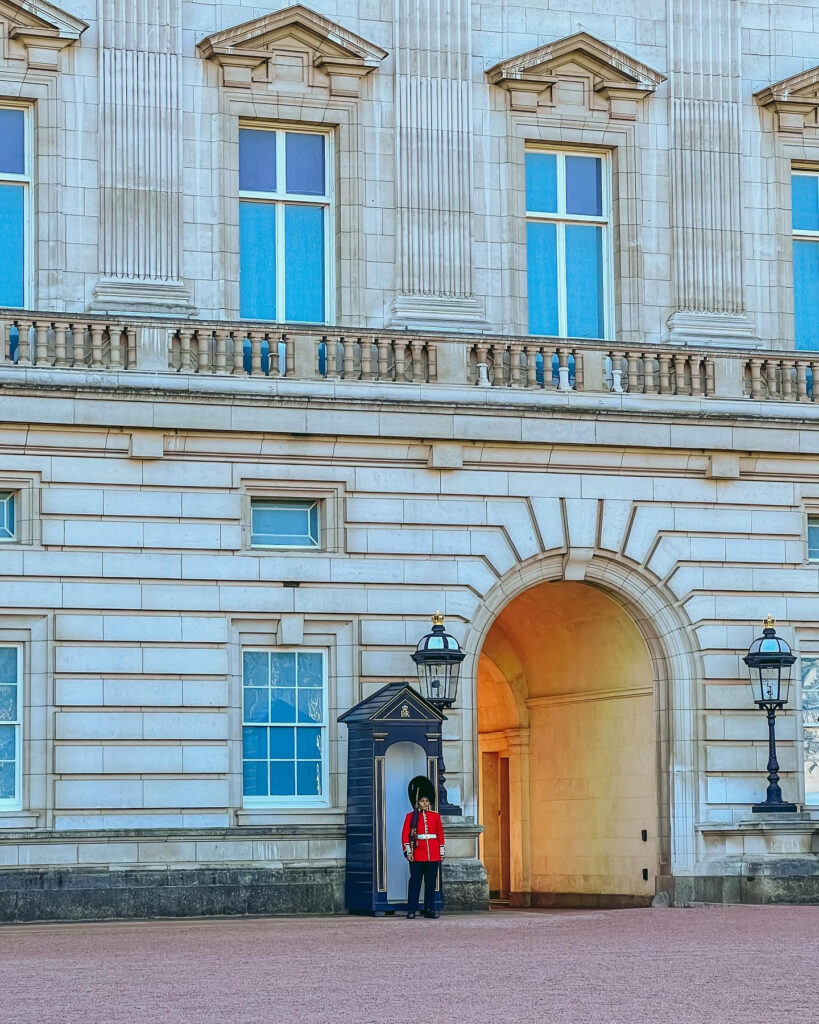
Afterward, wander around the grounds of the palace and take some photos.
Next, make your way to Westminster Abbey, which is just a short walk away. This Gothic cathedral is one of the most important churches in England and has been the site of many royal coronations and funerals.
Afterward, have lunch at a nearby pub or restaurant. My favorite is The George, which is located just across the street from Westminster Abbey.
In the afternoon, walk across Tower Bridge and visit the Tower of London. This historic castle was once used as a prison, but today it houses the Crown Jewels.
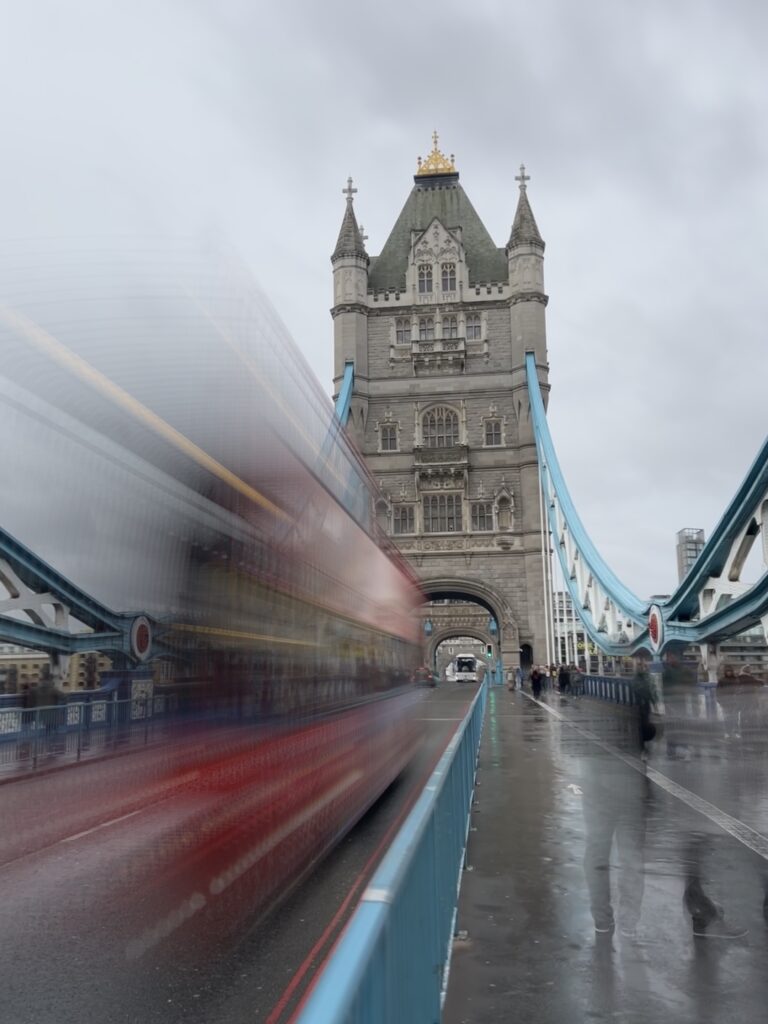
Be sure to also check out the Yeoman Warders (also known as Beefeaters) who live on the grounds and provide tours of the castle.
In the evening, grab dinner at a local restaurant. I recommend checking out Covent Garden, which is a popular area with lots of great restaurants and bars.
Then you can explore the neighborhood and do some shopping or people-watching.
Day 2: More Sightseeing in London
Start your day by taking the hop-on hop-off bus tour that comes with your London Pass. This is a great way to see the city and get an overview of all of the different neighborhoods!
Hop off at any of the stops that interest you and explore further. Some of my favorite places to visit are Piccadilly Circus, Leicester Square, and Covent Garden.
In the afternoon, visit Kensington Palace and Hyde Park. Kensington Palace is the official residence of the Duke and Duchess of Cambridge, but it is also open to the public.
Explore the gardens and grounds there before heading to Hyde Park.
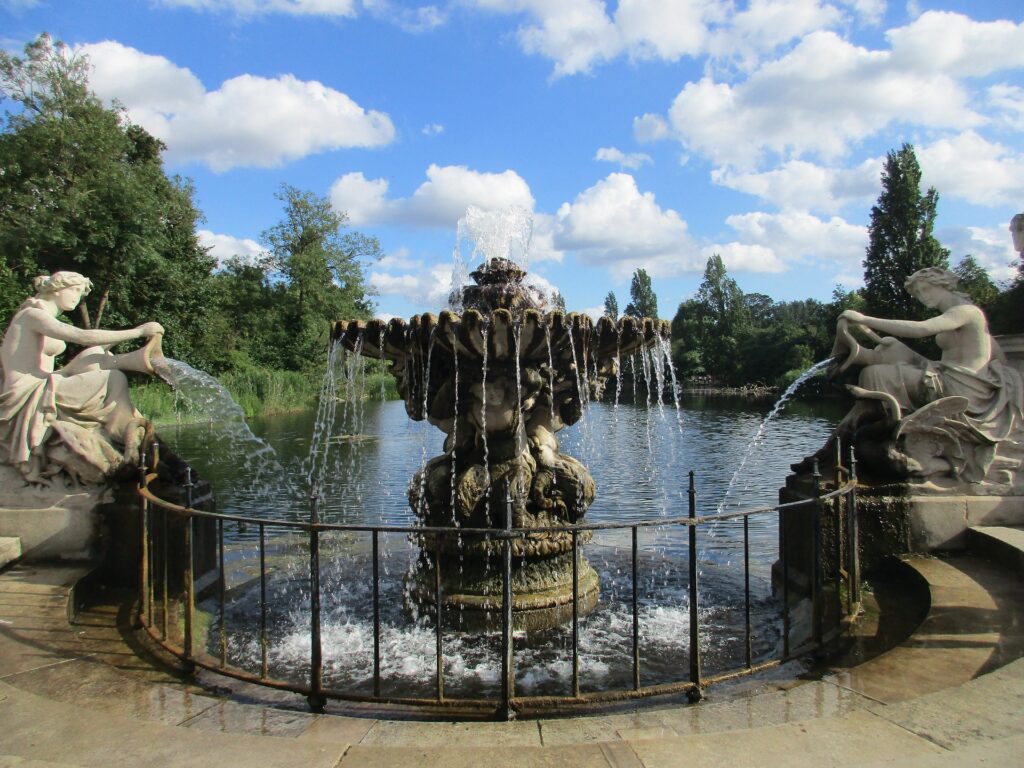
Hyde Park is an expansive green park and one of the largest parks in London. Hyde Park is a great place to relax, go for a walk, or go boating on the Serpentine Lake.
Day two in London is a great day to take a walking tour around the city. I recommend the London Secrets Guided Tour, which takes you to all of the hidden gems that most tourists never get to see.
This tour is a great way to see all the best places in London and learn about the history of London while also getting some exercise. You’ll pass by all the major tourist attractions and famous landmarks while your knowledgeable tour guide tells you all about them.
In the evening, have dinner at a local restaurant and then see a play at Shakespeare’s Globe Theatre.
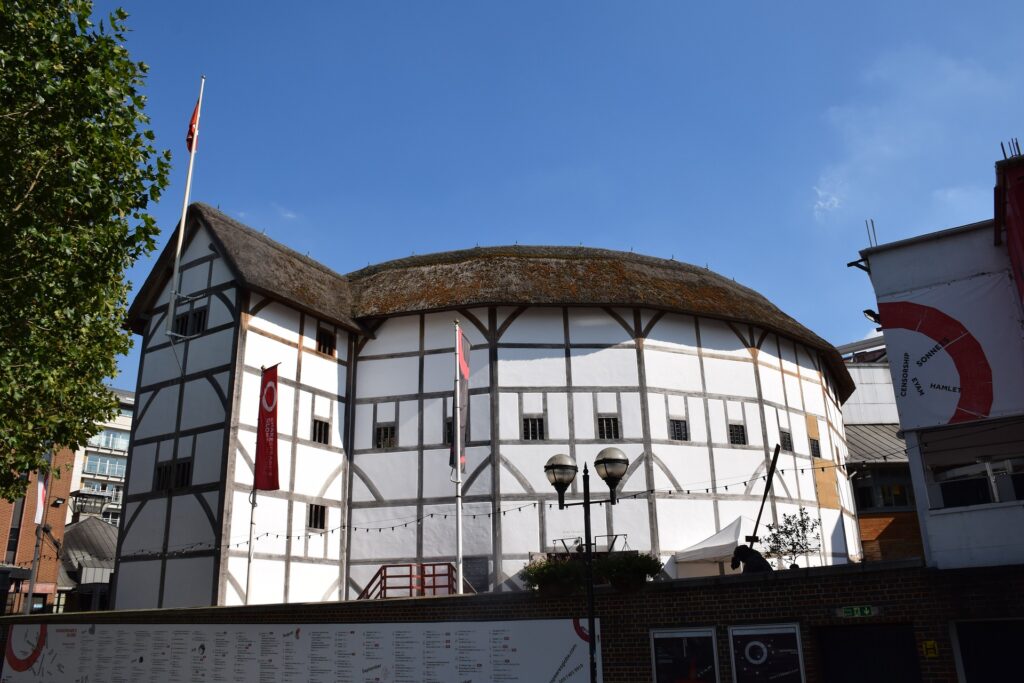
This open-air theatre is located just across the river from the Tate Modern art gallery. You can book tickets for a guided tour of Shakepeare’s Theatre by clicking here.
Day 3: Exploring London’s Neighborhoods
Today, you’ll explore some of London’s most popular neighborhoods.
Start by visiting Camden Market, which is a large market with over 1,000 stalls selling everything from clothes to food.
Next, stroll through the nearby neighborhood of Notting Hill, which is known for its cute pastel-colored houses.
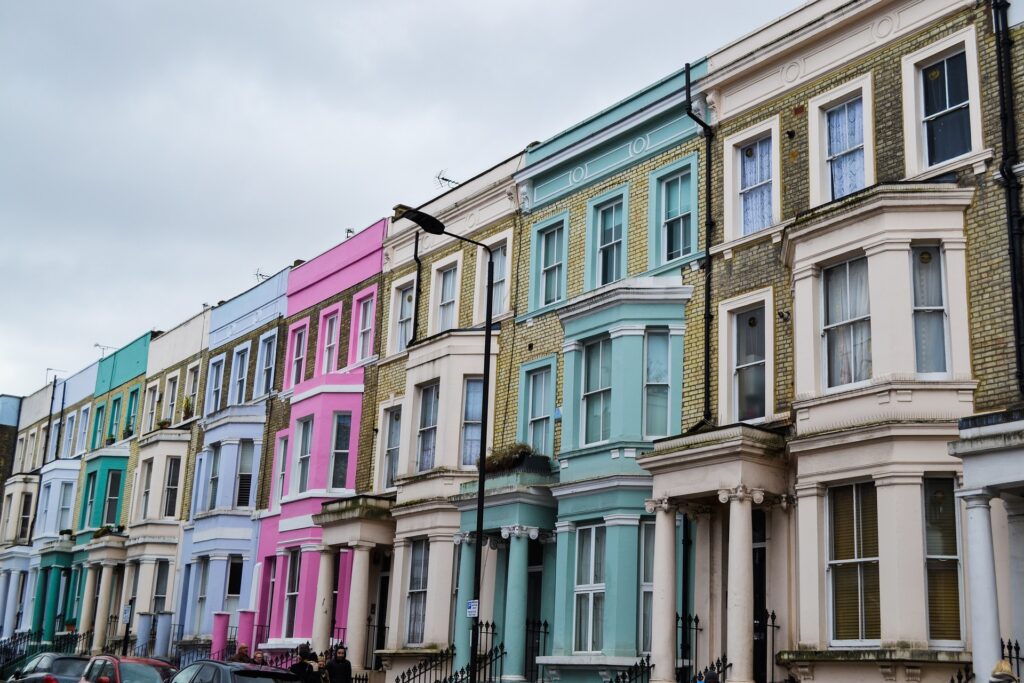
Then, visit Portobello Road Market, which is the world’s largest antique market.
In the afternoon, head to Oxford Street and do some shopping. This is one of the busiest shopping streets in London and is home to many high-street fashion stores.
If you’re looking for something more unique, then explore the neighborhood of Covent Garden, which is full of independent shops.
In the evening, have dinner at a local restaurant and then go to a show at one of London’s famous theatres. The West End is home to many of the city’s best theatres, so be sure to check out what’s playing before you go.
End the night by grabbing a drink in Shoreditch, which is known for its hipster bars.
Day 4: Day Trips from London
There are many great day trips that you can take from London. You can get outside of the city easily by using the regional train system.
If you’re interested in history, then consider visiting Stonehenge or Windsor Castle.
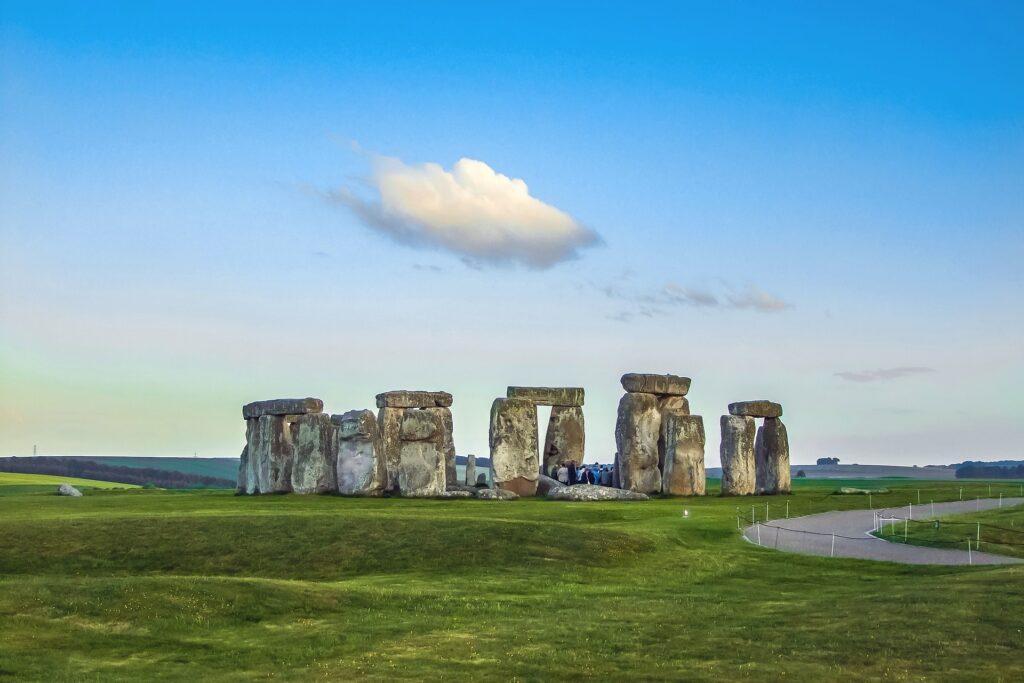
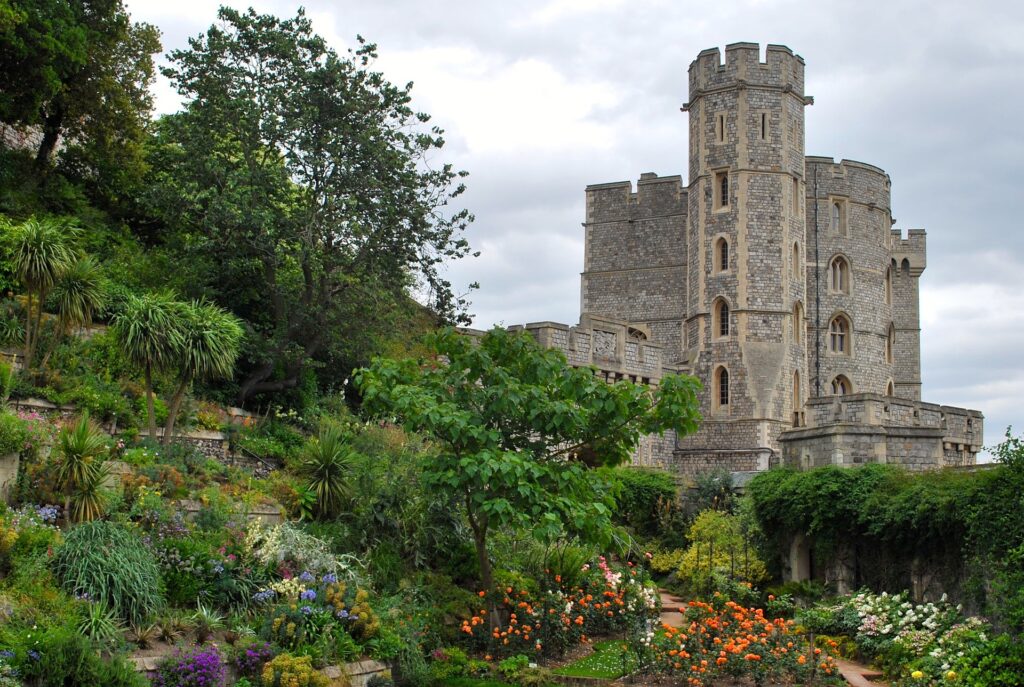
For something more scenic, take the train to Bath and explore this beautiful Georgian city.
P.S. This guided full-day tour stops at Stonehenge, Windsor Castle, and Bath, so you’ll get a chance to see all three attractions in one day!
If you want to get out of the city for a day and explore some prestigious universities, take a trip to Oxford or Cambridge.
You can even spend a day in Paris on a one-day guided day trip to Paris!
Whichever day trip you choose, be sure to come back to London in the evening and enjoy a delicious meal at one of the city’s great restaurants. A really popular and well-rated restaurant is The Ivy, which serves modern British cuisine.
End your trip with a bang by going to see a musical or play in the West End.
London is known for its great theatre scene, so this is the perfect way to end your trip. Shows like Hamilton and Les Miserables are currently playing, so be sure to check out what’s on during your visit.
Where to stay in London
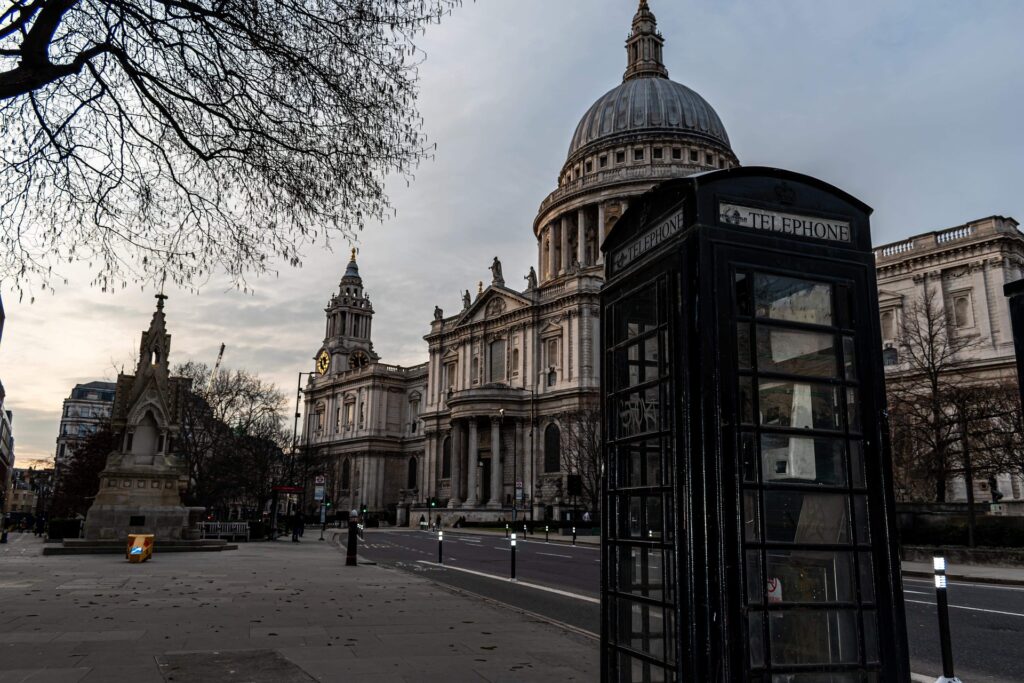
Best neighborhoods to stay in London
London is huge, so where you stay will depend on what you want to see and do while you’re here.
If you’re interested in doing a lot of sightseeing, then I’d recommend staying in Central London, as many of the main attractions are located here.
Some popular neighborhoods in Central London include Westminster, Kensington, and Covent Garden.
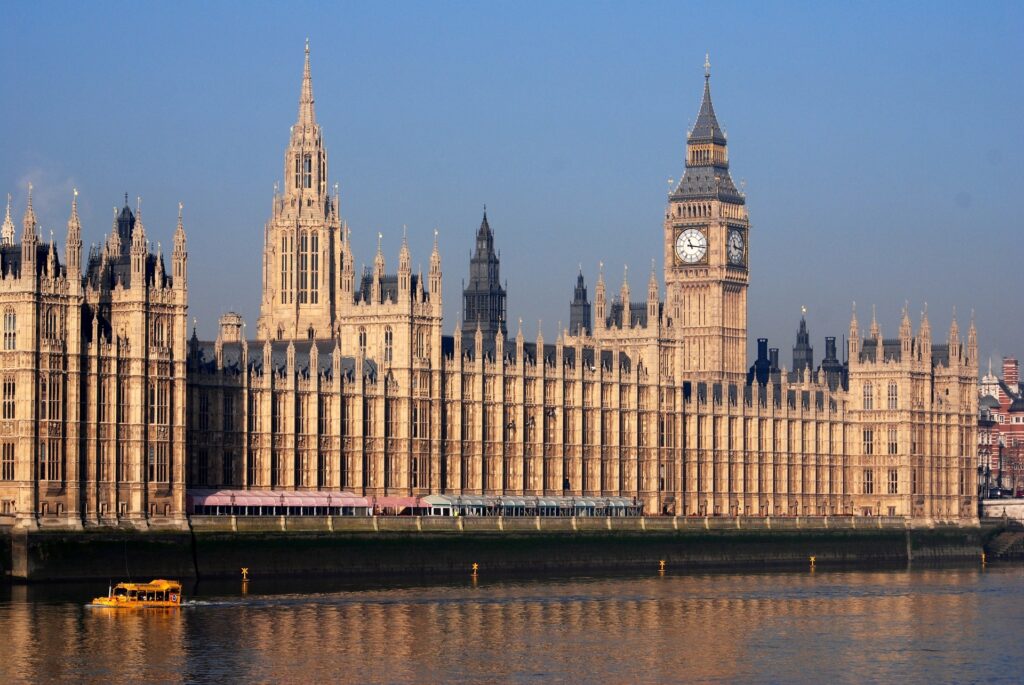
These neighborhoods tend to be more expensive in terms of hotels, but they’re close to many of the main attractions in London.
If you’re looking for a more local experience, then you might want to stay in one of the many other neighborhoods that London has to offer.
Some of my favorites include Shoreditch, Notting Hill, and Camden.
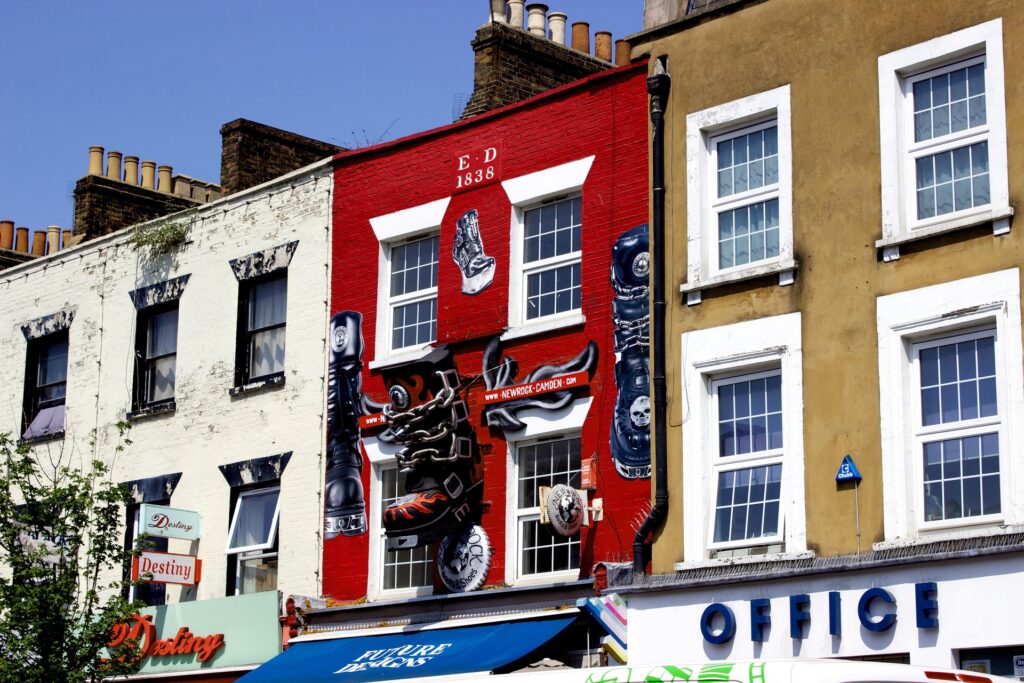
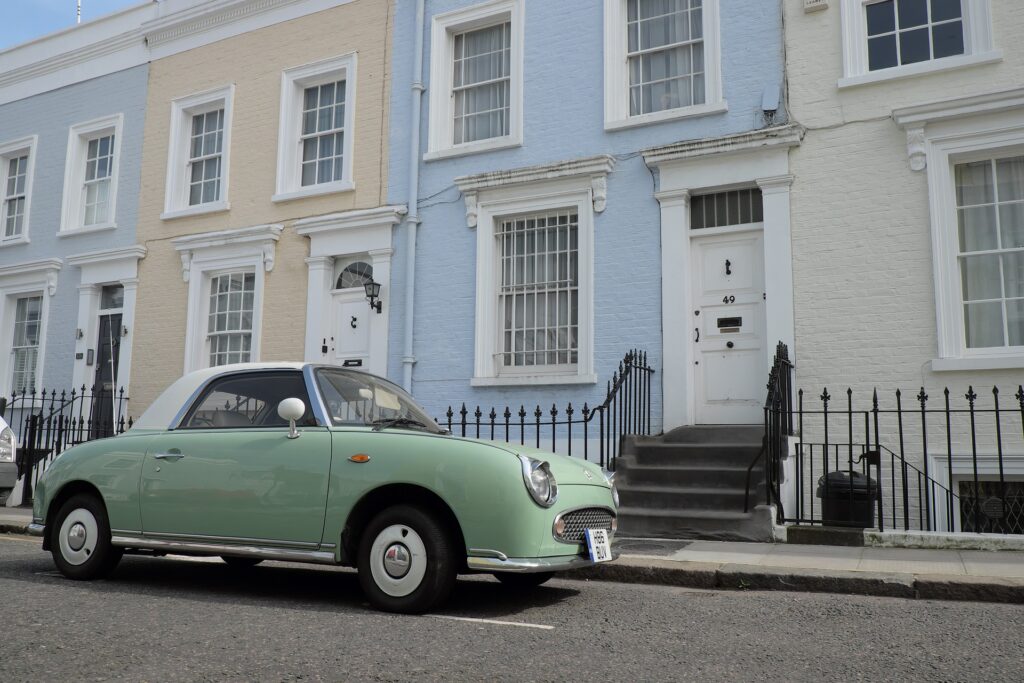
Staying here will give you a better sense of what it’s like to live in London, as you’ll be surrounded by locals rather than tourists.
No matter where you stay, there are plenty of great hotels, Airbnbs, and hostels to choose from ranging from luxury hotels to budget-friendly hostels. Just make sure to book ahead of time!
London can be quite expensive, especially during the peak tourist season.
Find accommodation in London
You can browse through over 100 hotels, hostels, resorts, and vacation stays in London here 👇
My top choices for hotels in London
Budget – St. Christopher’s Inn London Bridge ($)
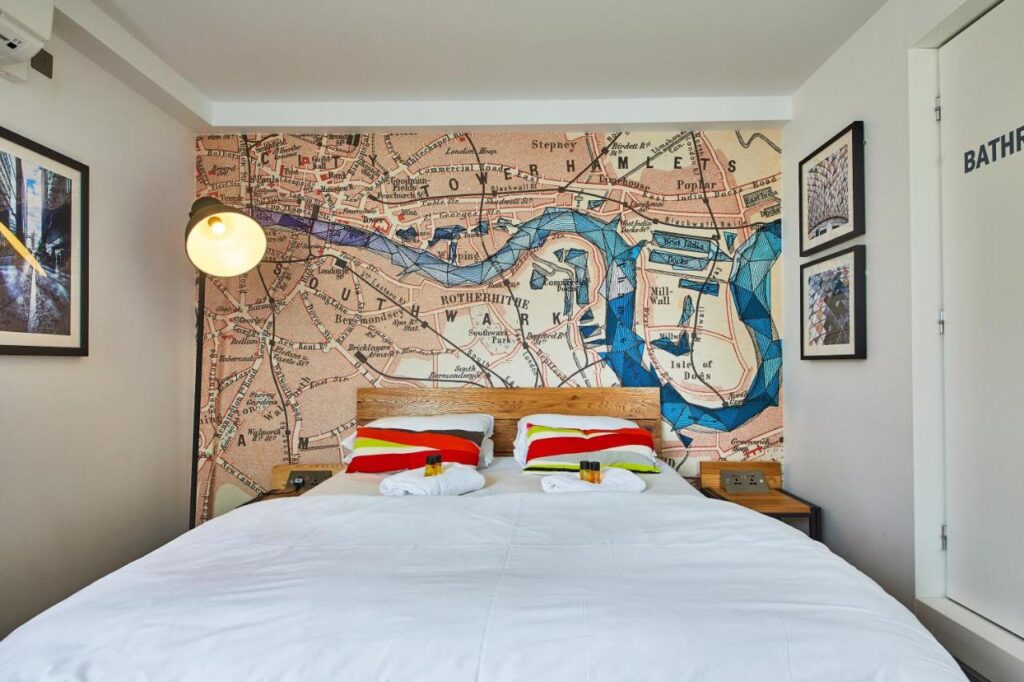
For budget travelers in London, St. Christopher’s Inn is a great option. This hostel is centrally located, with easy access to the city center and multiple subway stations. It also has great reviews, with guests praising the cleanliness and helpfulness of the staff. You can check availability and current rates on Booking.com by clicking here.
Mid-range – Ibis Styles London Southwark ($$)
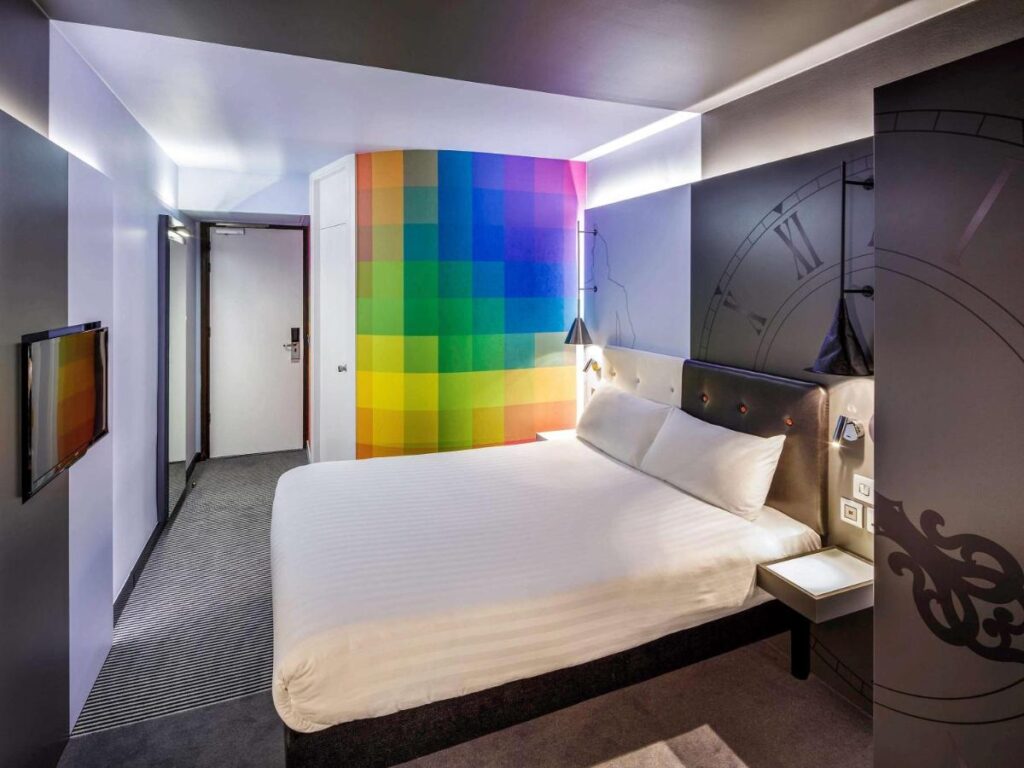
Located near Borough Market and the Tate Modern, Ibis Styles London Southwark is a great option for those looking for a mid-range hotel. This hotel has modern rooms and an on-site restaurant, making it a great place to relax after a long day of sightseeing. You can check availability and current rates on Booking.com by clicking here.
Luxury – The Soho Hotel ($$$)

If you’re looking for a luxurious hotel in London, then The Soho Hotel is a great option. This hotel is located in the heart of Soho, one the best neighborhoods of London, and features beautiful rooms, a rooftop bar, and a spa. Guests also rave about the helpfulness of the staff. You can check availability and current rates on Booking.com by clicking here.
What to pack for London
No matter what time of year you visit London, you’ll need to pack appropriately for the weather. In general, the city has a mild climate, but it can get quite chilly in winter and quite warm in summer.
I’d recommend packing layers that you can easily add or remove depending on the temperature.
If you’re visiting during spring or summer, then I’d also recommend packing a light raincoat or umbrella, as it does tend to rain quite often in London!
Other than that, just make sure to pack your usual travel essentials, such as your passport, travel insurance, etc.
And don’t forget to pack comfortable shoes, as you’ll be doing a lot of walking while you’re here!
London packing list
- Comfortable walking shoes
- Light raincoat or umbrella
- Layers for different temperatures
- Passport and travel insurance
- UK SIM card or travel phone plan
- Your usual travel essentials
- UK voltage converter
- Cash (British pounds)
Tips for a seamless London visit
1. Get an Oyster Card: This is a prepaid card that you can use to ride public transportation in London. It’s much cheaper than buying individual tickets and will save you a lot of time. You can purchase an Oyster Card at any Tube station.
2. Avoid using cash: Many places in London now accept contactless payments, so there’s no need to carry around cash. Just make sure to have your credit or debit card handy.
3. Get travel insurance: This is always a good idea, but it’s especially important if you’re visiting London, as the city can be quite expensive. Be sure to read the fine print of your policy carefully before you buy it.
4. Use Google Maps: London can be a bit confusing to navigate, so make sure to download Google Maps (or another GPS app) before you arrive. This will come in handy when you’re trying to find your way around the city.
5. Plan ahead: London is a huge city, so it’s important to plan ahead and figure out what you want to see and do before you arrive. This will help you make the most of your time in the city.
FAQ
Absolutely! London is a huge city, and you can easily spend more than a week here without seeing everything. But with a little bit of planning, you can easily see the best that it has to offer in just four days. This London itinerary covers all of the essentials, from iconic landmarks and museums to lively markets and neighborhoods.
London can be expensive, but it doesn’t have to be. There are plenty of free things to do in London, and with a little bit of planning you can save money on activities, food, and accommodation.
The best time to visit London depends on what you want to see and do. If you’re interested in exploring the city’s many historical landmarks and museums, then spring or summer are ideal. But if you want to experience London’s lively Christmas markets and festive atmosphere, then December is the best time to go.
The best way to get around London is on the “tube”, the city’s underground train system. But you can also get around by bus, taxi, or on foot. If you’re planning on doing a lot of walking, then it’s worth investing in a London “Oyster Card”, which gives you discounted fares on public transport.
The currency in London is the British Pound (GBP). Credit cards are widely accepted, but it’s also a good idea to have some cash on hand for small purchases.
The official language of London is English, but you’ll also hear plenty of other languages being spoken. This is because London is a melting pot of cultures, with people from all over the world calling it home.
Whether or not you need a visa to visit London depends on your nationality. citizens of the UK, US, Canada, and most European countries do not need a visa. However, citizens of other countries may need a visa, so it’s best to check with the British embassy or consulate in your country before you travel.
There is no definitive answer to this question, as everyone’s list of the best things to do in London will be different. But some of the most popular attractions include Buckingham Palace, the Tower of London, Westminster Abbey, and St. Paul’s Cathedral.
Thanks for reading!
Thanks for reading, I hope you found this London itinerary helpful!
If you’re planning a trip to London, then make sure to save this post for later. And if you found it helpful, then please share it with your friends! Don’t forget to follow me on Facebook, Instagram, and Pinterest to keep up with my travels!
Hey, I’m on Youtube too!
If you haven’t heard, I’m currently documenting my life as an international student living in Paris and my travels all over the world on my Youtube channel. Be sure to check it out and subscribe for travel videos of all the places I visit!
Pin this post
Hi, I’m Tiana – founder of and author here at Where Tiana Travels. I’m a 20-something with a love for all things travel, photography, and food. I have been living abroad for the past 5 years and solo traveling the globe in my free time. I created this blog to share my travel stories and inspire other women to go out and see the world. Read more about me here!

